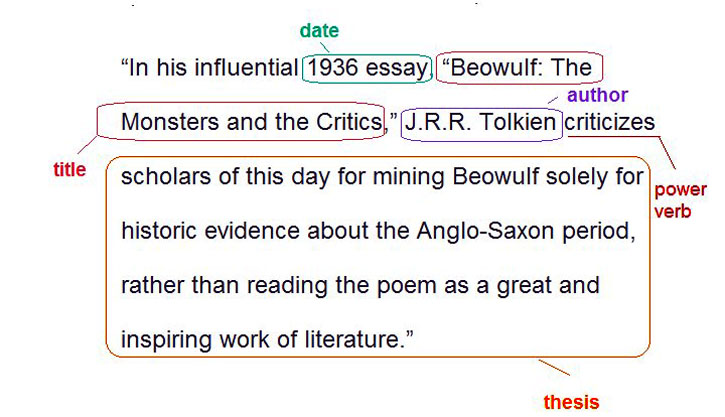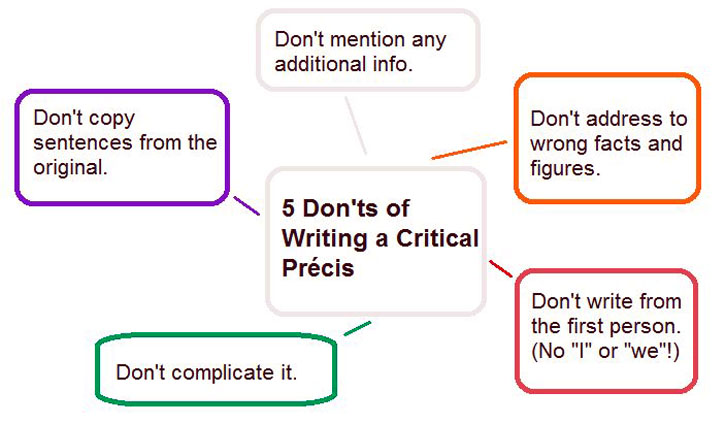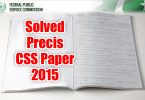When assigned to write a critical précis, make sure you understand its characteristics which are:
- A précis is a critical summary of writing abstracts.
- A précis is NOT re-writing or interpretation of the original.
- It is NOT written with words from the original, though you are welcome to use some quotes if appropriate.
- It summarizes the content of the original.
- A précis reveals a meaning of the original and explains its value.
- As a rule, a précis is 1/4 of the original in length, except as noted.
- It follows the standard format: an author’s thesis and methods he uses to represent it, results, and conclusion.
A Critical Précis Qualities
A précis will demonstrate your writing skills to professors, as well as your ability to express your thoughts intelligibly. Make sure your paper highlights the following qualities:
- Clarity, which means your reader should understand what a writer intended to convey. Achieve it through using simple language and structure of your precis.
- Correctness, which means you should watch spelling, grammar, and punctuation you use, as well as facts, figures, and dates you address.
- Objectivity, which means candid construal of the information. Don’t give your opinion in a précis.
- Coherence, which means the logical interconnection of the original’s ideas. Your audience shouldn’t lose their interest while reading.
- Conciseness, which means avoiding unnecessary details in your précis. Don’t omit essential facts but avoid wordy expressions, repetitions, wateriness, etc.
How to Write A Critical Précis
“I didn’t have time to write a short letter, so I wrote a long one instead.” ― Mark Twain
One of the most famous American essayists, Mr. Twain nailed it: short doesn’t equal quick and easy to write, especially if you write a summary, not simple re-writing of the original. So, the process of writing a précis starts with critical reading and research:
- Read the original piece carefully.
- Specify its main points and arguments.
- Consider the evidence used by the author.
- Research unfamiliar material (definitions, statements, unknown words, data, etc.)
- Identify the appeals used by the writer.
- Evaluate how the author conveyed meaning.
- Restate the thesis.
- Write a 1-2 sentence summary of each section of the article.
- Describe the piece in your own words.
- Reread the article and compare it with your summary.
Now it’s time to start writing the final draft of your critical précis. Begin with paraphrasing the thesis and your 1-2 sentence statements, then review it to make sure you’ve explained the main point, identified the evidence, and used the logical structure.
Finally, check your précis for clarity, correctness, and coherence.

Follow the Structure
A critical précis is not an essay, but its structure looks the same. As well as an essay, a precis consists of three parts:
• Introduction
This is a single sentence including the following information:
- the author
- the title of the piece
- the date of its publishing (in parentheses)
- power verbs determining the author’s thesis (such as“explains”, “argues”, “proves”, etc.)
- the thesis itself.
• Body
Each paragraph explains a separate section of the original piece, providing the author’s evidence, purpose, and ideas. Don’t forget that you can’t interpret arguments from your point of view but should analyze the author’s stands on an issue. Feel free to use quotes here, but be brief and attribute them correctly.
• Conclusion
It should restate the main idea. Summarize everything and remember to avoid any personal statements about the original piece.
Précis for practice
Sandra M. Gilbert, professor of English at the University of California, Davis, in her essay “Plain Jane’s Progress” (1977), suggests that Charlotte Brontë intended Jane Eyre to resemble John Bunyan’s Pilgrim’s Progress in that Jane’s pilgrimage through a series of events based on the enclosure and escape motif eventually lead toward the equality that Brontë herself sought. Gilbert supports this conclusion by using the structure of the novel to highlight the places Jane has been confined, the changes she undergoes during the process of escape, and the individuals and experiences that lead to her maturation concluding that “this marriage of true minds at Ferndean – this is the way” (501). Her purpose is to help readers see the role of women in Victorian England in order to help them understand the uniqueness and daring of Brontë’s work. She establishes a formal relationship with her audience of literary scholars interested in feminist criticism who are familiar with the work of Brontë, Bunyan, Lord Byron and others and are intrigued by feminist theory as it relates to Victorian literature.







